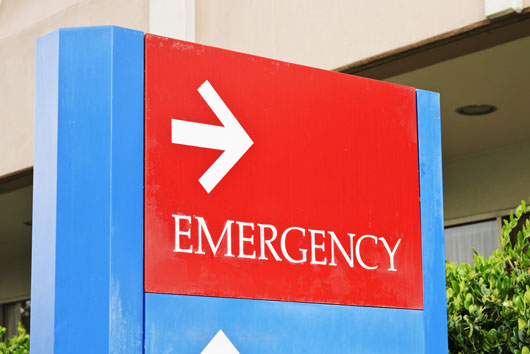
Are you sure your health insurance plan is exactly what you or your family need? Are you paying too much or perhaps not enough? In the private insurance market, people tend to buy policies that cater to their specific needs. For instance, if you’re planning to get pregnant, you find a plan that covers maternity benefits. If you have kids, you buy the plan that covers pediatric care. Health care is a crucial part of your finances and picking the right health plan can be daunting. According to America’s Health Insurance Plans, more than one-sixth of the U.S. economy is devoted to health care spending. Your individual part in that is on the rise, leading to increased premium costs, no matter your health situation.
Now with President’ Obama’s Affordable Care Act, there are more opportunities for middle to lower income households. Don’t forget, the next open enrollment period for The Affordable Care Act runs from November 15, 2014-February 15, 2015. “The big Obamacare deadline looming on March 31 isn’t just the last chance for most Americans to buy health insurance this year,” says Jeffrey Young from the Huffington Post. “It’s also the last chance to avoid paying penalties under the Affordable Care Act’s dreaded “individual mandate.” People who don’t have health insurance or a government health plan like Medicare or Medicaid must get health insurance or pay a penalty tax. Time is of the essence, so here are 10 reasons to relook at your health plan today.
1. Private care versus Obama care
For lower income individuals who have to pay for their own health plans or contribute to their company’s expensive health plans, Obamacare may be more attractive. Before making a decision, Forbes magazine recommends you compare Obamacare’s benefits coverage to those offered by your old plan and ask yourself if it is worth the added costs (though federal subsidies will offset these expenses). Also bear in mind that Obamacare will limit your choice of doctors for the sake of more benefits.
Read Related: How to Find Low-Cost Mental Health Care Without Insurance

2. What you are willing to spend on premiums
Plans with lower monthly costs generally make it up in other ways. A lower monthly premium, means your out-of-pocket costs may be higher when you need care. If your plan has a higher premium, your out-of-pocket costs may be lower when you need care. In other words, the lower your monthly premium the higher your out-of-pocket costs will be.

3. Out of pocket costs
With the economy improving, the last five years has seen a rise in workers’ out-of-pocket costs. Know how much you have to pay out of your pocket for services when you get care. Generally, Bronze and Silver plans have lower monthly premiums, but you’ll pay higher out-of-pocket costs when you need care. Gold and Platinum plans tend to have higher premiums but lower out-of-pocket costs.

4. Emergency Room visit coverage
It’s nice to know your emergency care facility is there for you and your loved ones if you need it. Most health plans provide coverage for urgent care at a small copayment. But it’s best to make sure exactly the type of coverage you have before that emergency strikes. Make sure to ask if you will have to pay a co-payment or deductible for emergency care or need prior authorization to ensure coverage of emergency medical care.

5. What benefits you have
The new Affordable Care Act ensures health plans both inside and outside of the health insurance marketplace offer a comprehensive package of items and services, known as the essential health benefits. They include: 1) Outpatient care, 2) Trips to the emergency room, 3) Treatment in the hospital for inpatient care, 4) Care before and after your baby is born, 5)Mental health and substance use disorder services, 6)Your prescription drugs, 7) Services and devices to help you recover if you are injured, or have a disability or chronic condition 8)Your lab tests 9) Preventive services, and care for managing a chronic disease, 10) Pediatric services: This includes dental care and vision care for kids.

6. Prescription drugs
So your health insurance plan covers your prescription drugs, but your co-pay might not give you the lowest price. If you’ve been prescribed a generic type of medicine for you flu, you may want to check chain stores such as Wal-mart for prices on your prescription. Their prices for many generics are often cheaper than the average health insurance co-pay.

7. The costs of the extras that aren’t included
Keep in mind that extra benefits like birth control, breastfeeding, or dental coverage are not included in the essential health benefits. You’ll have to shop around for the best offers or pay out of pocket for the care you’re seeking.

8. Your special doctor may not be covered
If you want to keep your favorite doctor, check to see that they’re covered by any insurance plans you’re considering. HMOs are the most restrictive. PPOs let you go outside the network for higher fees. POS plans are hybrids, allowing patients to pay extra to go outside the network. If paying extra doesn’t go with your budget, it may be time to try a new physician.

9. Group plans versus individual health insurance policies
If you work for an employer that offers health insurance, you may be able to get it at a reduced cost. At the very least, it usually gives you the option of purchasing into a group plan, which can be an added plus if you’re not in good health. If you’re self-employed, consider Obamacare, indemnity plans or you might also be able to access group plans through trade associations like the Writers Guild of America and the Actors’ Equity Association.

10. Do your comparison shopping
Don’t’ skimp on time when it comes to shopping for your family’s health insurance plans. Your health and your children’s health come first. Here’s where you can comparison shop:obamacarefacts.com, ehealthinsurance.com, healthplanone.com, healthinsurance.com, insuremonkey.com, and healthcare.gov.











